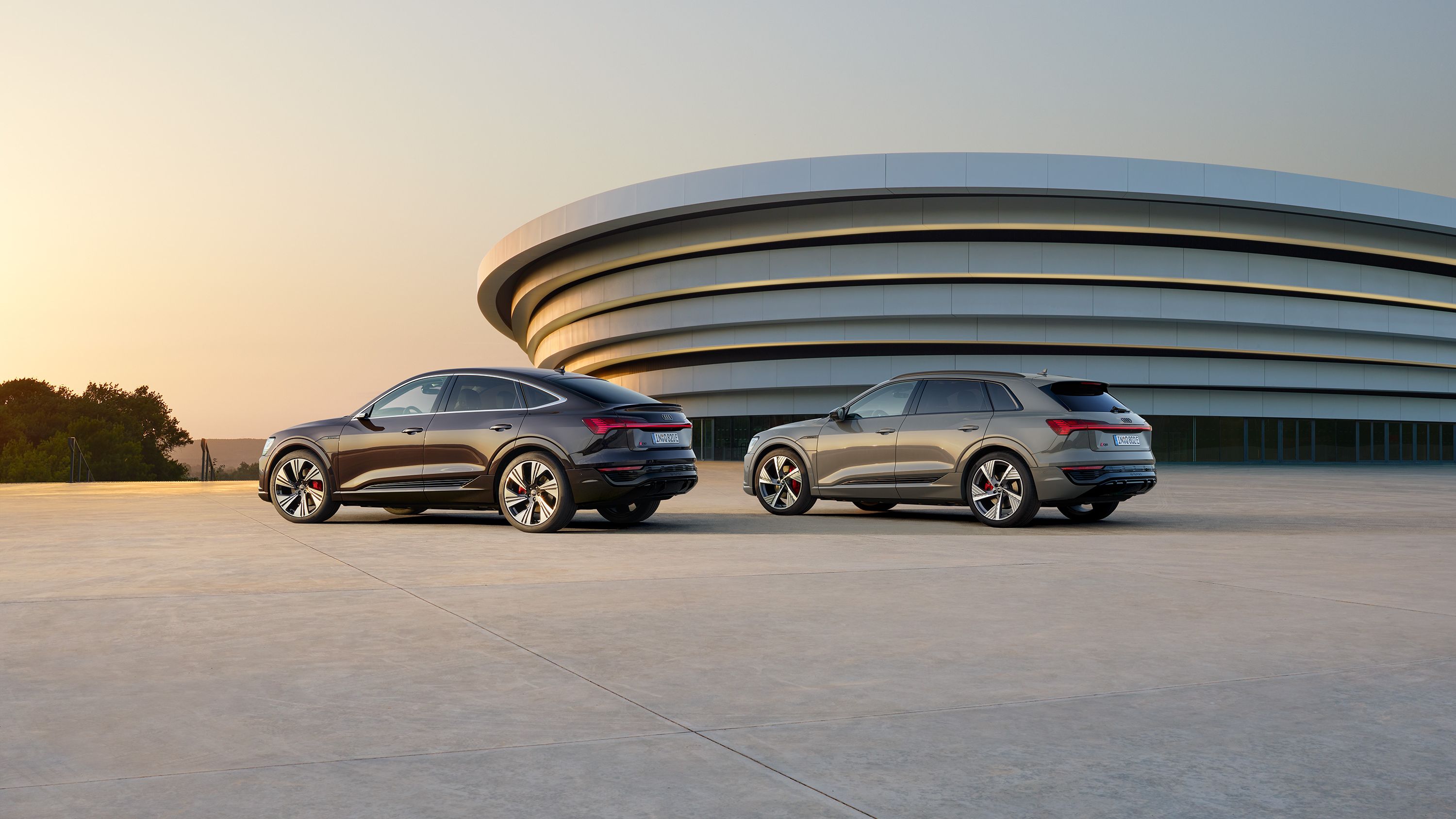The range of electric cars
Are electric cars only suitable for short distances and not everyday use? In real-world conditions, your electric range will generally differ due to various factors which may have a positive or negative impact.
Read on for more on electric range.
What influences your driving range?
The range that can be achieved with an electric car depends on various factors, such as:
- Your personal driving style
- The driving profile (selected Drive Select mode)
- Traffic conditions and road surface
- Tyre pressure
- Weight of load and optional equipment fitted
- Auxiliary systems like air conditioning and heating
- Environmental temperature and weather
The top 3 influences on your range
Temperature
The chemical make-up of Audi e-tron model batteries means that it’s at its most efficient when outdoor temperatures are at around 20°C. This is because it operates best at its optimal temperature range (between 20°C and 30°C).
Air conditioning
Most auxiliary systems in a car require electrical power from the battery, with heating and air conditioning consuming the most energy on an electric vehicle. In fact, up to 30% of an electric car's mileage range can be used up in this way.
Driving profiles
Like a conventional combustion-powered car, the type of driving you'e doing, such as motorway or city driving, will affect its energy consumption, and therefore its range. More aggressive acceleration will consume larger amounts of battery power.
What is WLTP?
The WLTP is a new measuring procedure for determining the power consumption under the United Nations Economic Commission for Europe (UNECE).
The test environment
- Cars runs in an average speed of 33km/h; a condition tested by all manufacturers.
- Normally conducted in 23 degrees Celsius.
- Test based on City driving.
- Minimal load.
Frequently-asked questions about range
- Plan your drive and be mindful of your speed.
- Use the “Efficiency” or range mode in drive select. This is designed for particularly economical driving.
- Set a higher recuperation rate. An electric Audi can harvest the kinetic energy generated by braking and coasting, and converts it to an electric charge that’s channelled back to the battery. This is known as recuperation.
- Pay attention to the vehicle level. Reduce air resistance by reducing the vehicle height using the Audi drive select “Sport” or “Efficient” mode.
- Limit the use of auxiliary systems. The auxillary systems in a car require electrical power from the battery, with heating and air conditioning consuming the most energy on an electric vehicle. In fact, up to 30% of an electric car’s mileage range can be used up in this way.
- Avoid driving with attachments such as roof racks unless necessary.
The range display is calculated from the battery level, the current thermal conditions and the last consumption values. Due to the high efficiency of the vehicle and the e-drive, any driving resistance has a disproportionately high effect compared to a combustion vehicle. You can find the individual consumption value of your vehicle in the myAudi app under "Equipment details/Technical data/Consumption".
When you first collect your new electric Audi, it’s normal to notice a range figure that’s different to what you’d expect, even on a full charge. This is because the car needs to ‘learn’ your driving habits before it can calculate a more accurate mileage range.
Audi electric models have an intuitive system that takes into account previous driving journeys when calculating estimated range.
The calculation will be based on energy consumption from previous driving journeys, driver’s usage patterns and factors such as if the car has been stationary for a period of time and whether features like air conditioning have been used.
For these reasons, the range displayed in your electric Audi can regularly vary based on changes in driving conditions and on the above listed factors. You will notice a wider and more instant variance on range in electric vehicles than you do with fuel consumption for petrol or diesel powered cars.
You can recalculate the range indicated in your electric vehicle based on the driver’s usage patterns by fully charging the battery and driving the car under moderate conditions for at least 300 km.
The range management in the Audi e-tron informs the customer in every situation about the range that is still available. Your Audi e-tron will alert you in good time when the power storage is almost empty. For this purpose, the driver is warned when the remaining range is 100 km and again when the remaining range is 50 km. If necessary, automatic route guidance to the nearest charging station begins. In addition, when the remaining range is low, your vehicle automatically switches to energy-saving mode to maximise the remaining range.
Explanations and tricks
Audi e-tron models use an intuitive system to calculate your mileage range. It factors in energy consumption from previous journeys; whether it's been stationary for long periods of time; and the other factors mentioned above that affect range. Because the new car won't have driven many miles, nor have much data on its new owner's driving style, we therefore recommend that you drive it for at least 300 km on your regular routes to allow the car to give you a more realistic estimate based on your driving profile.
The car will always be recalculating the range based on previous driving data. Driving a distance of at least 300 km on your everyday routes will allow the car's system to gather sufficient data for a more accurate estimate.
The interior air conditioning requires a higher percentage of energy in relation to the total consumption, especially at low average speeds.
